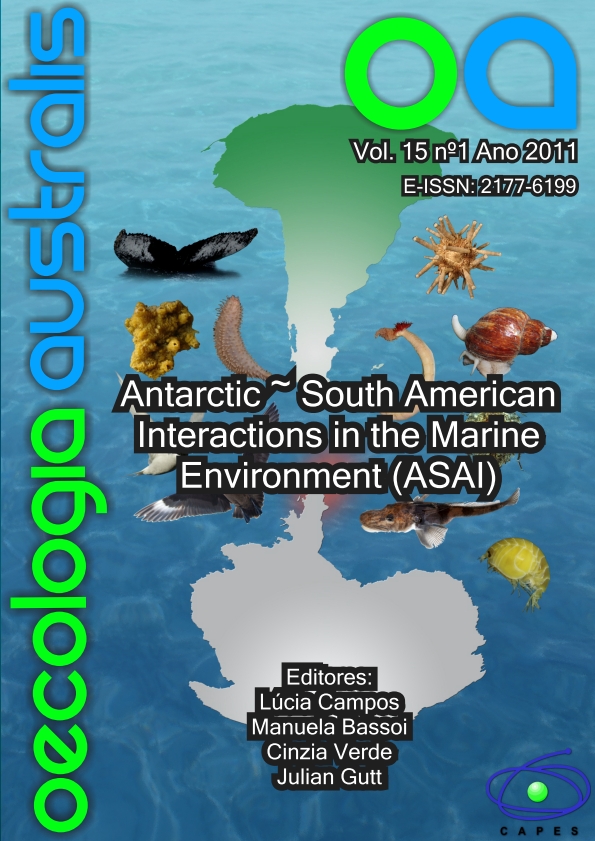BIOGEOGRAPHY AND CONNECTIVITY BETWEEN WESTERN SOUTH AMERICAN AND ANTARCTIC MARINE MOLLUSCS
Keywords:
Biogeography, Diversity Gradient, Rapoport´s Rule, Antarctic, Marine Mollusca.Abstract
table.MsoNormalTable { font-size: 10pt; font-family: "Times New Roman","serif"; }The latitudinal diversity gradient is widely recognized, leading researchers to assume that Antarctic fauna are impoverished. However, with increased sampling efforts, some studies have shown a great diversity of certain marine groups surrounding the Antarctic continent, with higher rates of them. Antarctic endemism may be associated with its isolation and climate change over the evolutionary time scale. Despite this relative isolation, recent evidence suggests some degree of connectivity between the Antarctic and South American faunas. Our study used secondary data extracted from Malacolog 4.1.1. The geographical area considered was the entire South American Atlantic coast and the the adjacent areas of the Antarctic (Antarctic Peninsula, part of the Weddell Sea and islands of the Scotia Arc). Our survey yielded 6517 species of mollusks. The most diverse province was the North Brazil Shelf, and the least diverse was the Scotia Sea. Endemism rates for low-latitude provinces were close to 15%, in contrast to the highest endemism rate of 40% in the Scotia Sea Province. The highest value for richness was found for the Guianan ecoregion, and the lowest value for the Antarctic Peninsula. Most ecoregions had an endemism rate around 3%, with the highest endemism in South Georgia. The richness gradient increased toward lower latitudes. The cluster analysis for the malacofauna indicated four statistically significant groups. The bathymetric Rapoport´s Rule showed the increase of bathymetric range toward higher-latitude ecoregions and whereas Bergmann´s Rule showed the opposite relationship. The higher richness at -25oS may be associated with the presence of coral and calcareous algal reefs. At mid-latitudes richness was also high, and this region comprise an ecotone between thermophilic and cryophilic species'. The cluster analysis validated three provinces proposed by Spalding (2007), although it revealed the inadequate knowledge of the North Brazil Shelf province. The higher endemism observed in the Magellanic and Scotia seas demonstrates the influence that Antarctic isolation has on its community structure, although the cluster showed the existence of a connection with South America. The observed converse Bergmann´s Rule could be explained by the shorter seasons at higher latitudes, which limit the phenotypic body size that can be attained.


